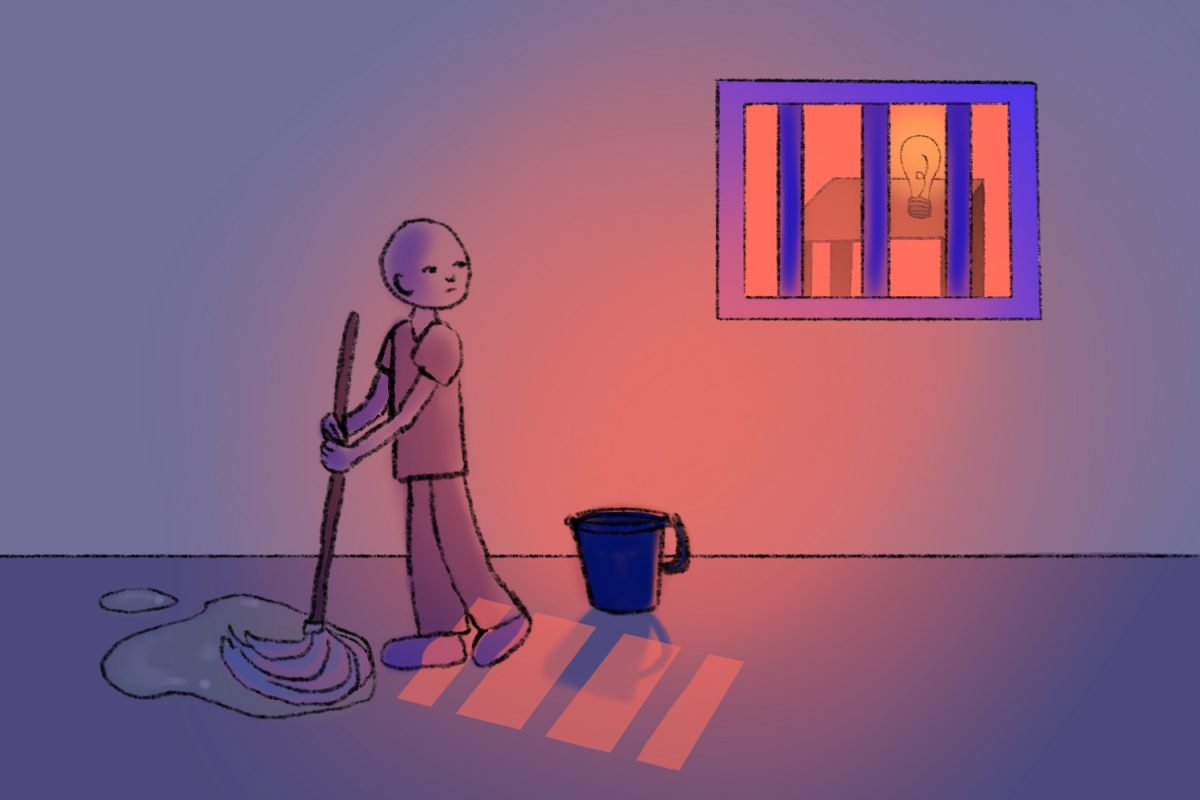It has been 159 years since the 13th Amendment was passed to end slavery.
Yet, here in California, prisons are still exploiting the work of people who would much more benefit from rehabilitation, training, and education.
Section 1 of the 13th Amendment in the United States Constitution states that “neither slavery nor involuntary servitude, except as a punishment for crime whereof the party shall have been duly convicted, shall exist within the United States, or any place subject to their jurisdiction.”
This allows prisons to force inmates to work as an excuse for punishment, potentially inhibiting their ability to focus on improving themselves through rehabilitation, training, and more.
According to a study by the American Civil Liberties Union (ACLU), more than 65% of incarcerated individuals reported being forced to work. These types of involuntary servitude include jobs such as manufacturing furniture and clothes, eyeglass making, firefighting, repairing facilities, and more.
“Involuntary servitude is not gentle, and it’s not kind. It’s not about restitution for victims. It’s not about rehabilitation for the person who caused harm. It’s not about public safety. Involuntary servitude is theft of labor. It is about exploiting someone’s human talent, labor, and skills,” said Carmen-Nicole Cox, the director of government affairs at the ACLU.
Samual Nathaniel Brown is the founder and director of the 10P program and the original author of Proposition 6. Proposition 6 was featured on this year’s general election ballot, aiming to end involuntary servitude in prisons and focus more on rehabilitation.
Currently, many rehabilitative programs exist. However, due to the amount of forced labor being asked of those who are incarcerated, these programs are often hard to access.
“When a person goes to prison, the Board of Parole Hearings and even us in the public wants them to take the programs that allow them to address the causes that led to them drinking, smoking, utilizing substances as coping mechanisms that led to them committing a crime. Not going to learn how to push a broom,” Brown said.
Prisons are not prioritizing self-improvement for those incarcerated. They work inmates eight hours a day, five days a week, for as little as 16 cents an hour. That is only $1.28 a day.
This type of dehumanizing work does not allow people to truly address the underlying issues that landed them in prison. To do so, they should be utilizing this time to attend classes on how to reduce recidivism or attend rehabilitation and therapy, not be confined to a work area.
“As a state, we need to ensure that those folks being released are best positioned to be successful when they come home and reintegrate into society successfully. That way, we can enhance public safety and curb recidivism rates because they’ll be coming home better positioned,” said Esteban Nunez, the senior vice president at Actum LLC and an affiliate of the Anti-Recidivism Coalition.
According to the California State Auditor, rehabilitation programs can reduce recidivism by changing incarcerated people’s behavior based on their individual needs.
These programs include community groups like Arts In Corrections (AIC), educational programs to help get college credits or a GED, Career and Technical Education (CTE) programs, and specialized treatment programs like Alcoholics Anonymous.
These types of rehabilitation are meant to allow incarcerated individuals to prepare for re-entry into the community by helping them focus on self-improvement, communication, and skill-building.
“When you complete rehabilitation programs, you earn time off your sentence, which means you are incarcerated for less time. If we prioritize rehabilitation, it means fewer folks will be incarcerated because it’s less likely that people will go back and re-offend,” Cox said.
According to Cox, 90% of incarcerated people come home, however, the recidivism rate is still very high. This stresses the importance of rehabilitation to help people get home more easily.
“Rehabilitation is what makes us safer, unlike warehousing people and forcing them to work for the benefit of others. We’ve been doing it for 174 years in our state prisons, and to this day, nearly 60% of folks re-offend. It doesn’t work, and it’s expensive,” Cox said.
According to Cal Matters, the cost of incarceration for one individual is $132,860 per year using California tax dollars. While this only accounts for around 6% of all California tax expenditures, this tax money is being used in the wrong way and cannot provide adequate resources for those in prison.
“We pay $133,000 every single year for every person inside of our prison. Every year, we pay back. So we’re not preparing them to come home, we’re preparing them to go back, and that is a waste of our taxpayer dollars,” Cox said. “People coming home and going back is too expensive when we can just prepare them to come home and stay home.”
While the number of incarcerated people has gone down in past years, the amount spent on each person incarcerated has been increasing. Even with this, most of this money is not spent on rehabilitative programs.
Many states, such as Utah and Nebraska, have already amended their constitutions to prohibit the use of involuntary servitude and slavery entirely. However, California has still allowed this type of forced labor in prisons.
As a state known for bringing opportunities to people, this is one issue that California is not up to par with compared to other states. This is a hidden issue that many people have to be more aware of when they are voting and filling out tax forms. It is important to know exactly where our funds are ending up.
“Our values as Californians are supposed to be embodied by our state constitution. Our state constitution has an exception to slavery. In my opinion, slavery should be eliminated altogether. There should never be an exception to slavery,” Nunez said.
It is hard to understand that our constitution allows this loophole effect of allowing involuntary servitude to continue day in and day out, overtaking the livelihood of those in prison.
“We’re a state that believes in second chances and redemption. Nothing about forced labor and prioritizing forced labor over allowing people to improve themselves is consistent with Californian values,” Cox said.
We have been misleading incarcerated individuals away from the quickest path to re-entry when we allow prisons to focus on abusing their authority to force them to work.
Our number one priority must focus on supporting and preparing them to be stable enough to return home so they can contribute positively to their communities.













